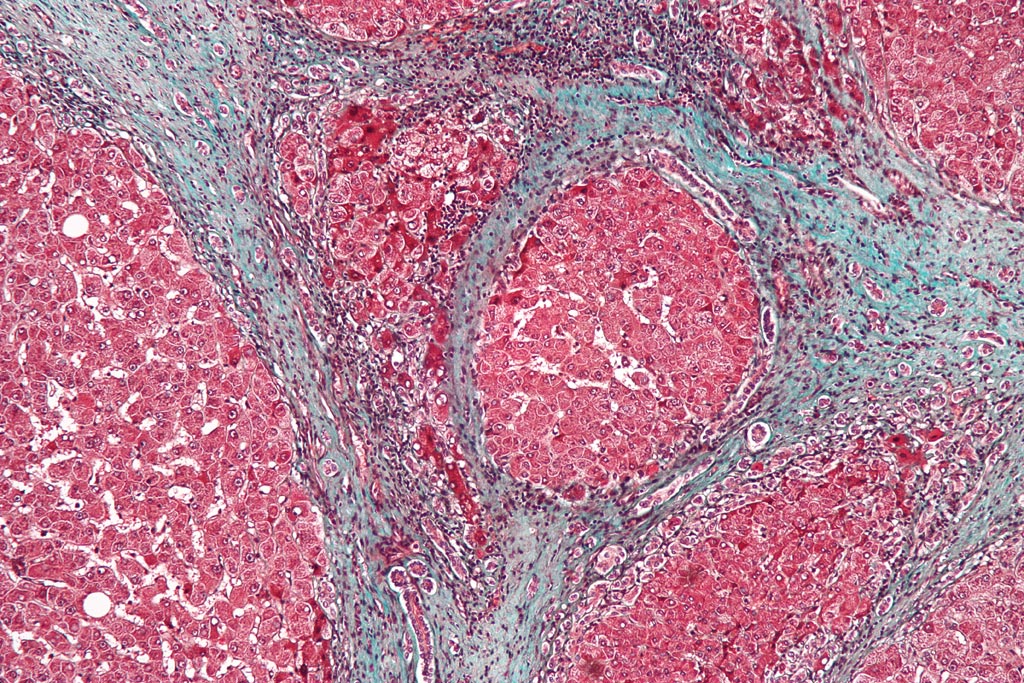Fluorescent-Polymer Sensor Test Detects Liver Fibrosis
By LabMedica International staff writers
Posted on 06 Jun 2018
A novel method has been developed that can detect liver fibrosis from a blood sample in 30-45 minutes.Posted on 06 Jun 2018
Liver disease is the fifth most common cause of premature death in the Western world, with the irreversible damage caused by fibrosis, and ultimately cirrhosis, a primary driver of mortality. Early detection of fibrosis would facilitate treatment of the underlying liver disease to limit progression. Unfortunately, most cases of liver disease are diagnosed late, with current strategies reliant on invasive biopsy or fragile laboratory‐based antibody technologies.

Image: A micrograph showing cirrhosis of the liver. The tissue in this example is stained with a trichrome stain, in which fibrosis is colored blue. The red areas are the nodular liver tissue (Photo courtesy of Wikimedia Commons).
To upgrade the laboratory's ability to detect liver fibrosis, investigators at the University of Massachusetts (Amherst, USA) and University College London (United Kingdom) developed a robust, fully synthetic fluorescent‐polymer sensor array. The array uses polymers coated with fluorescent dyes that bind to blood proteins based on specific chemical processes. The dyes vary in brightness and color, presenting different signatures or blood protein patterns.
The sensor procedure, which was completed in only about 45 minutes, was evaluated by comparing results from 65 finger-prick volume blood samples taken from three balanced groups of healthy patients and from a group with early-stage and late-stage fibrosis patients. The test distinguished fibrotic samples from healthy blood 80% of the time, reaching the standard threshold of clinical relevance on a widely used metric and comparable to existing methods of diagnosing and monitoring fibrosis. The test distinguished between mild-moderate fibrosis and severe fibrosis 60% of the time.
"This platform provides a simple and inexpensive way of diagnosing disease with potential for both personal health monitoring and applications in developing parts of the world," said senior author Dr. Vincent Rotello, professor of chemistry at the University of Massachusetts. "A key feature of this sensing strategy is that it is not disease-specific, so it is applicable to a wide spectrum of conditions, which opens up the possibility of diagnostic systems that can track health status, providing both disease detection and monitoring wellness."
Use of the fluorescent‐polymer sensor array was described in the May 24, 2018, online edition of the journal Advanced Materials.
Related Links:
University of Massachusetts
University College London













